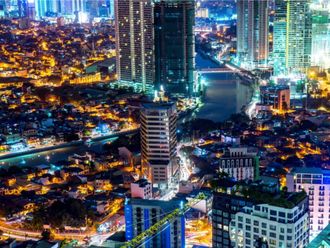
More than 40 per cent of the world’s population is already living under water–stressed conditions, and things could get worse, given a year-on-year population growth of nearly 1.10 per cent. More than 60 per cent of people in the MENA region have little or no access to drinking water, and climate change could easily make matters worse in the future.
“Countries in the MENA region are at a natural disadvantage because of the arid climate and limited availability of groundwater”, says Chandra Dake, CEO and Founder of Dake Reschand, a company that offers sustainable solutions in water purification, desert farming, water harvesting, construction, sand casting, sand oil and more.
“Moreover, the exponential growth of urban centers, such as the major Emirati cities, is leading to an over-exploitation of this limited groundwater”, Chandra adds. “In this scenario, it is increasingly essential to find sustainable new sources of water, to account for all water use - domestic, agricultural and industrial”.
The role of rainwater harvesting
So far, rainwater harvesting has not optimized, at a global scale - despite some important exceptions. Recurrent droughts in Australia have prompted individual and commercial house owners to invest in rainwater catchment systems. Parts of Japan and South Korea have also been implementing rainwater storage systems, as a water supply option that reduces vulnerability in times of flooding. Udaipur, one of the driest places in India is another prime example of an efficient rainwater storage system, where the model of using unique inter-connected micro system of river diversion and linkage has been providing year-long water supply for its residents for over four centuries.
“Without question, rainfall can cover basic human needs in a sustainable way and reduce the exploitation of fragile groundwater resources”, Chandra shares. “Once the idea of storing rainwater is acknowledged as a key component of water management, it can open up the possibilities of decentralizing water supplies and empowering localized food security”.
Moving away from centralized systems
So what role can decentralized rainfall catchment systems play in integrated water management? How can the strategy upgrade existing agricultural and industrial practices?
Simply put, decentralization can create systems that are more resilient, cumulatively - whether in industry, agriculture or energy production. Over the years, large-scale centralized water systems have ruled the roost. However, decentralized systems allow water to be managed close to where it is consumed, resulting in transformative energy efficiencies and saving consumers money.
“Decentralized rainwater management systems can minimize reliance on upstream management, thereby reducing the water supply service expenditure across scattered households”, Chandra continues. “With appropriate support technologies, the decentralized rainwater catchment systems allow individuals and communities to directly manage the supply of water according to local demand, reducing wastage across all the resources – from water itself, to infrastructure and energy”.
A more sustainable and resilient model
It is inevitable for the world’s water-scarce regions to proactively work towards innovative and sustainable methods to ensure water security, and rainwater harvesting is emerging as an integral part of water management systems. Rainfall should be regarded as a manageable, inexhaustible source of water by our policy makers and planners. Implementing rainwater catchment at all available scales will not only promote individual self-reliance, but also add up to creating a thriving future for communities and national water grids.












